
Ned Pelger's blog on construction, design and other weirdness. Email him at ned@constructionknowledge.net
Please help him win his readership competition against his son Lex at the Construction Phone Apps Blog
Front Architects from Poland came up with a creative concept, converting billboards to houses. As advertising moves online, there looks to be a glut of billboard space. A thin house in a interesting spot might be cool. Some of their concepts that I found at Dornob are below:
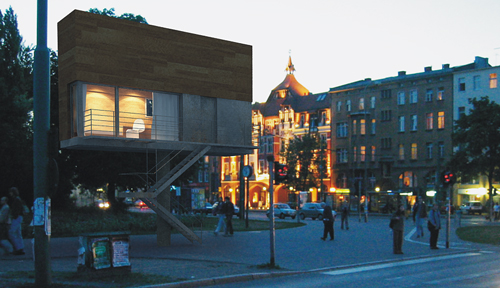
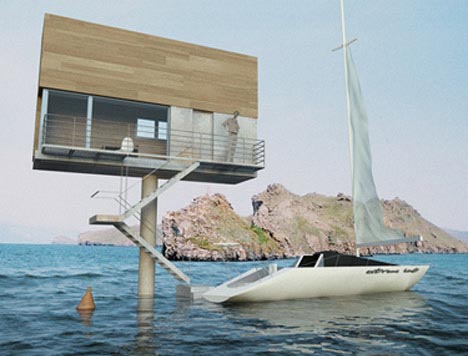
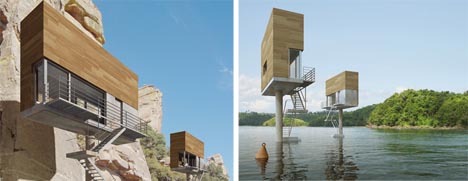
Creativity inspires me, and I hope you too. Whatever problem you’re working on today, try to throw some more creativity into the resolution.
I came across a blog post of the world’s 10 greatest bridges. The New River Gorge bridge in West Virginia made the list and is pictured below.
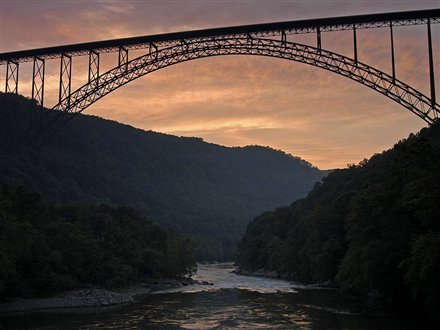
I’ve always enjoyed the beauty and grace of well designed bridges. My own list would include a Robert Maillart bridge as well as a wooden covered bridge.
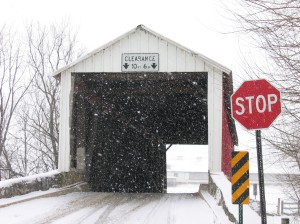
Do you have one weird pick for a bridge favorite?
Speaking of bridge favorites, you may want to watch this 1940s newsreel of the collapse of the Tacoma Narrows bridge.
[youtube=http://www.youtube.com/watch?v=HxTZ446tbzE]
It’s instructive to watch that video occasionally to be reminded of the power of harmonic frequency. My favorite part of the footage is watching the old guy in the pick-up truck stuck on the bridge.
Do you trust that the things that get built get built right? Lots of people going to Chicago’s Sears Tower apparently do. The Ledge just opened on the 103rd floor, where visitors can step out onto a 4′ glass floored and walled projection. Looking 1300′ straight down, visitors get a view never before seen.
[youtube=http://www.youtube.com/watch?v=Fo8Iog8tuaQ]
The Ledge uses 3 layers of 1/2″ glass and is designed to carry a 5 ton live load, apparently more load than the engineers figure could possibly be applied by people cramming into the space. Hey what’s the worst that could happen?
The Tradesman who build Green (Sustainable Design) Buildings bring a different point of view from the Construction Supervisors, Engineers and Architects. The Greening of Southie video highlights the differences. An 11 story, 144 unit condo building in South Boston was built to the LEED Gold standard. The recycled structural steel from a plant within 500 miles and the waste jobsite recycling program illustrate some of the changes from normal jobsites.
Considering that buildings use a large percentage of the energy in America, those of us in the building construction industry have an opportunity to be part of some major changes. Take time to learn about the many ways to make your project more sustainable. If you lead in this process, you make yourself more valuable in the market, as well.
On the lighter side, this link illustrates how they talk in Southie and will certainly make you laugh if know anyone from there.
My son Lex sent me this link under the heading, “Pop’s Porn”. It’s true I love to see elegantly designed and constructed structures. I studied reinforced concrete design under Prof. David Billington in college. He opened my eyes to the possibility of combining the truth of how structures actually work with a sleek, efficient design aesthetic. The bridges of Robert Malliart especially illustrated this principle.
On family vacations, we’d often drive out of our way to see famous bridges. We’d stop and I’d ooh and ahh and take photos while Debby and the kids would roll their eyes to the extent that I thought an eye might actually end up rolling out of a socket and onto the ground. We didn’t lose any eyes, but I did get to see lots of beautiful bridges.
Never having been to China, though, I missed these amazing structures shown in Dark Roasted Blend.



It appears their construction safety standards may be a bit more lax than I’m accustomed to.
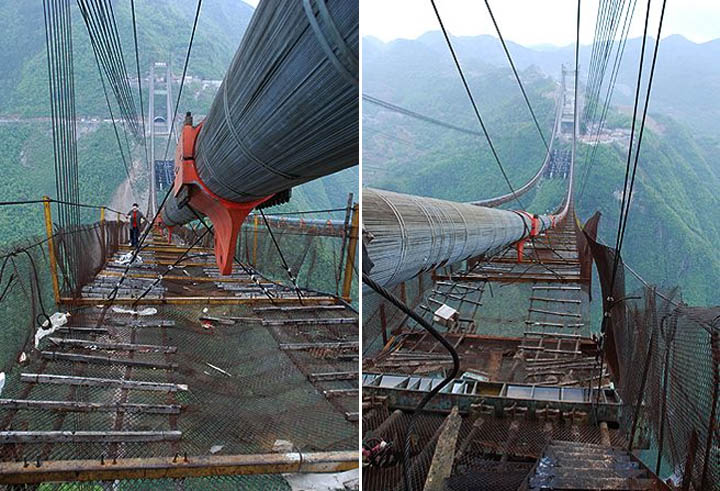
Isn’t this a beautiful shot? Hope you have a chance to build something beautiful today. Or at least the opportunity to do work that you enjoy.

Named “A House in Tokyo” this funky little dwelling had a limited width footprint. The design firm Atelier Tekuto combined beautiful lines and practical materials to create this cool little house.
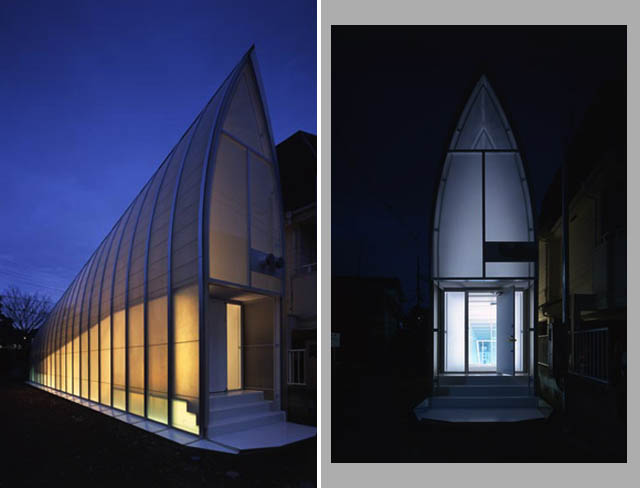
The elegance gets stripped away a bit with the daylight view, though it’s still wonderful design.
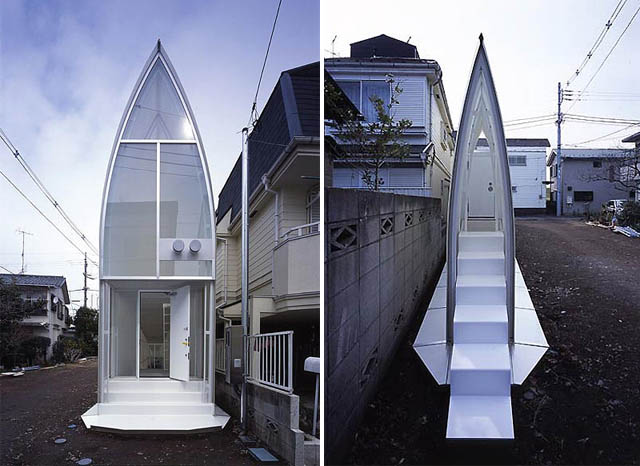
The structure shown in the photos below adds to the ethereal feeling.
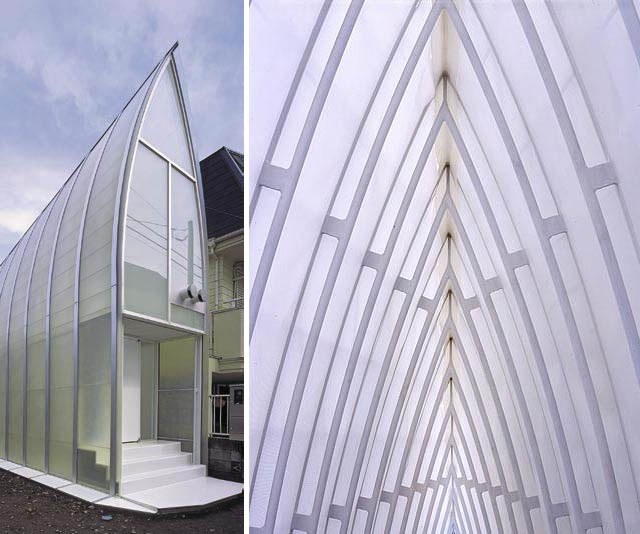
images credit: Atelier Tekuto
The next time you get asked to do some task that seems impossible, think of how the architect must have initially responded when challenged to design a house on this spit of ground. Try to not lead with “That will never work” and instead consider how you might draw from your creativity. Most of us say we aren’t creative, but everyone has creativity. You just have to use it and develop it.
I love to make things simple. I feel great when I can work on a complicated task and make it understandable for others who aren’t delving into all the details. Sometimes, though, the complexity has a beauty of its own. The subway map of a Tokyo train station shown below has that kind of beauty to me.
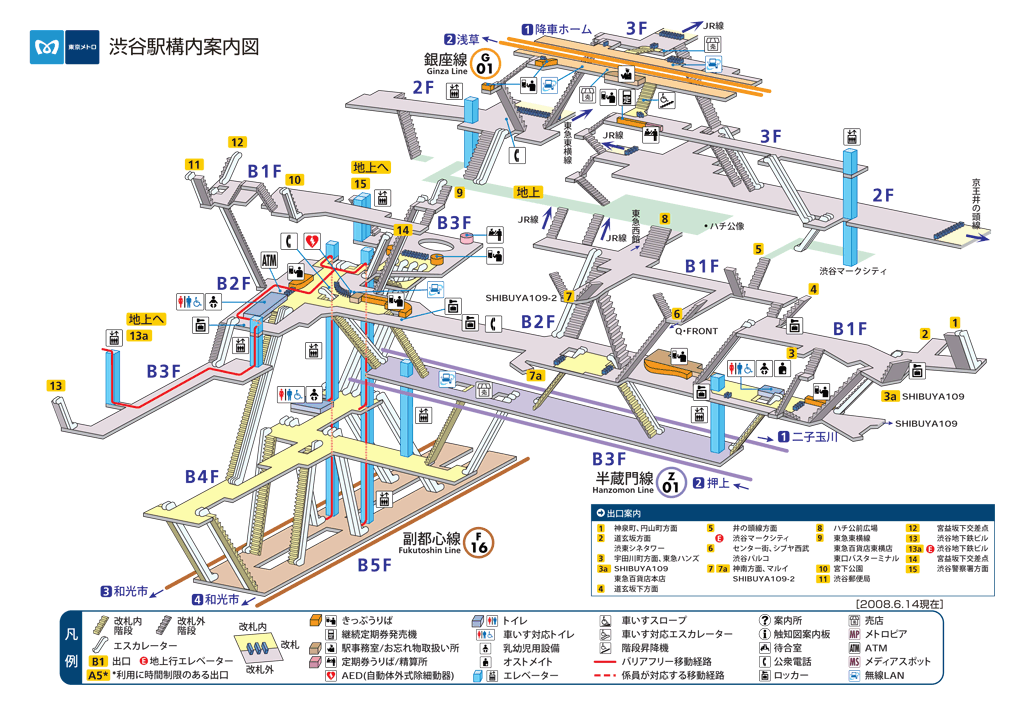 Imagine working on the design and construction of that kind of project. Everything still gets broken down into small individual steps (the place where all the actual work gets done), but the scale of the puzzle is so cool.
Imagine working on the design and construction of that kind of project. Everything still gets broken down into small individual steps (the place where all the actual work gets done), but the scale of the puzzle is so cool.
The mostly straight-foward projects we build give me plenty of challenges, and I’m glad I can finish them before I start getting bored. Sometimes, though, it’s good to contemplate the road not taken.
While TBW and I were in Las Vegas for the World of Concrete, we toured Hoover Dam. I’ve wanted to see it for years and was even more impressed than expected. The width of the dam was much less than I’d imagined, but the height astounded me. The design engineers found a perfect spot to build a dam, in a steep canyon with the Colorado River running through (as shown in the photo below):
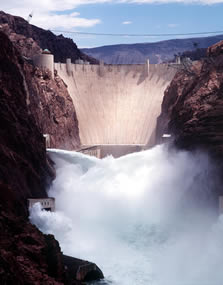
Built during the Great Depression, many of the workers moved their families to the area for the duration of the project. Work was hard to find in those times and many more men applied than got hired.
Some of their jobs intrigued me. The High Scalers lowered down from the top of the cliffs in rope bosun’s chairs. These guys worked the rock faces of the cliffs, drilling, blasting and cleaning out shot rock. They would just bounce out of the way during the blast. This was the most dangerous and highest paying of the trades.
Our guide expressed amazement that anyone would take that much more risk for only a nominally higher pay. Knowing construction sites, though, this fact didn’t surprise me. The High Scalers were the stars of the project, the cool guys, what’s some extra danger in the face of that?
One of these High Scalers got tired of having guys work above him and accidentally drop rock pieces or tools down on him. He wore a baseball cap, but that didn’t cushion the hit too well. So he took his baseball cap and dipped it in pane tar, let it harden, dipped it again and repeated the process for a few days. Then he had a hard hat that did cushion the blows. Other guys saw how well this worked and made their own hard hats. Then the contracting company saw the value and had thousands of hard hats made. The hard hat has been found on job sites ever since.
Some other job titles amused me. Powder Monkeys were the men who handled dynamite, blasting caps and blasting powder. Grunts were electrician’s helpers.
Our tour guide told us that 96 men died on site during the construction of Hoover Dam. The contracting company had a contract agreement to pay death benefits for workers killed on site. The government generally did not require such a payment. Therefore, after any accident the company tried to get the worker into an ambulance and off site ASAP, because if they died enroute to a hospital, at the hospital, or any place offsite, the company no longer had to pay death benefits. There are no clear records for how many people died offsite.
You may have heard the legend that the bodies of several workers were left in Hoover Dam concrete pours. In fact, the concrete was all poured in 8″ lifts and left to cure, with the next pour being at another location. So no bodies were left in the dam. It would be like having a worker buried in concrete on a slab on grade floor pour.
While walking across the dam, we could see theHoover Dam Bypass project being built.The beauty of those two concrete spans extending out to each other makes me smile.
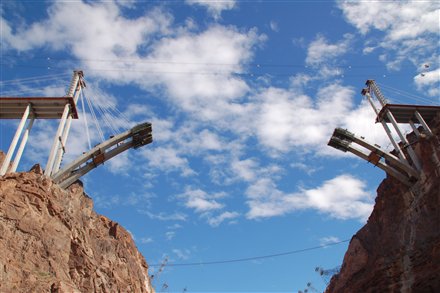
Since the 2001 terrorist attacks, Hoover Dam has been closed to large trucks and buses carrying luggage, so this bypass bridge will carry most of the traffic when completed.
Hoover Dam was built to provide water for California and the surrounding states (electrical power was almost an afterthought) and jobs for unemployed men during the Depression. Will our Stimulus Plan fund some grand projects that make America substantially more productive?
Weburbanist.com consistently delivers cool articles that are visually stunning. The stairs shown below are just a few of the ones that really stood out to me. When building commercial and industrial buildings, the building code tends to make stairs functional and boring. The stairs shown here seem to mostly come from residential spaces, where more creativity can be practiced.
Swedish TAF Architects designed these efficient stairs for a tight spot utilizing inexpensive pine boxes. Based on the premise of a ship’s ladder, the rise and run gains elevation quickly. It’s also beautiful.
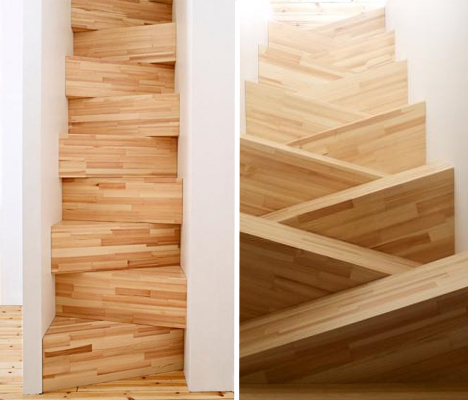
I love the combination bookshelf and staircase shown below. As a passionate reader and book collector, I’m always trying to find new and better ways to store and showcase books. I don’t think I’ve ever seen a more marvelous solution than the one shown below.

Can you guess how the stairs below are built? Maybe start with what material would likely be used? What cantilevers well and doesn’t deflect too much? Steel. The builders buried a steel beam in the wall on the same angle as the stairs and used full welds to connect the treads.
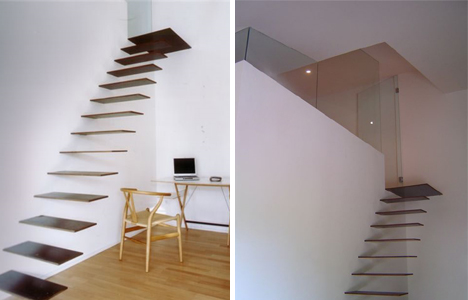
Finally, my favorite stairs just looks like fun.
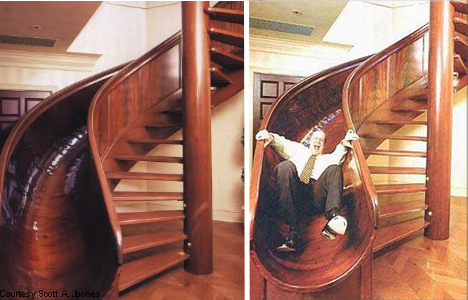
Seeing that final stair reminds me that I need to work out the details on a similar concept for a large church addition I’m on. We will have two slides that let elementary age kids enter their Sunday School rooms by sliding 14′ (from the floor above) down a helix shaped tube. So I get to have some fun too.
If you have a few minutes, watch these incredible building demolitions. The 16 videos included will certainly amaze you. I’ve always been fascinated by the the big buildings coming down, but never took part in one.
Definitely watch the first video about the New Frontier casino in Las Vegas (though at over 2 minutes it’s a bit long), and the second one about a skyscraper dropping amidst adjacent buildings (only 30 seconds) and you have to watch the 6th one showing a guy with a sledgehammer and a convoluted sense of self-preservation.
Leave a comment about which one was your favorite.